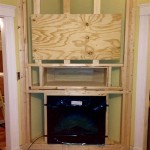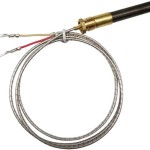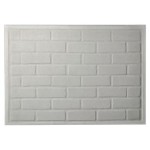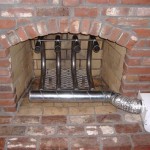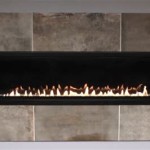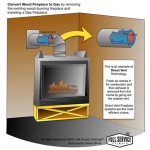Transforming Your Outdoor Space: The Allure of a Porch With a Fireplace
A porch with a fireplace represents a significant enhancement to any home, extending living space beyond the confines of interior walls and creating an inviting area for relaxation and entertainment. The addition of a fireplace transforms a simple porch into a year-round destination, providing warmth, ambiance, and a focal point for outdoor gatherings. The decision to incorporate a fireplace into a porch design necessitates careful consideration of various factors, including the type of fireplace, the structural requirements of the porch, and the overall aesthetic of the home and landscape.
The value of an outdoor living space is increasingly recognized by homeowners, who seek to maximize their enjoyment of their properties. A well-designed porch with a fireplace offers a comfortable and stylish environment for socializing with friends and family, enjoying quiet moments of reflection, or simply appreciating the beauty of nature. This article will delve into the key considerations involved in creating such a space, examining the different types of fireplaces available, the structural implications of their installation, and the design principles that contribute to a successful and enduring outdoor feature.
Selecting the Right Fireplace Type
One of the first and most crucial decisions is selecting the appropriate type of fireplace for the porch. Fireplaces are generally categorized into wood-burning, gas, and electric models, each offering distinct advantages and disadvantages. The choice depends on factors such as personal preference, budget, local regulations, and the availability of fuel sources.
Wood-burning fireplaces are often favored for their classic appeal and the authentic crackling sound and aroma of burning wood. They provide a substantial amount of heat and create a traditional, rustic ambiance. However, wood-burning fireplaces also require more maintenance, including regular cleaning to remove ashes and creosote buildup. They also necessitate a consistent supply of firewood and adherence to local regulations regarding open burning. The environmental impact of wood smoke is another consideration, as is the potential for sparks and embers escaping from the firebox. Proper ventilation is critical to ensure safe operation and prevent smoke from entering the home. The initial cost of a wood-burning fireplace can be higher due to the need for a chimney and firebox construction.
Gas fireplaces offer a more convenient and cleaner-burning alternative to wood. They can be fueled by natural gas or propane, providing a consistent and controllable source of heat. Gas fireplaces are relatively easy to operate, often featuring push-button ignition and adjustable flame settings. They require less maintenance than wood-burning fireplaces, eliminating the need for ash removal and firewood storage. While gas fireplaces offer a realistic flame appearance, some may not fully replicate the authentic ambiance of a wood fire. Installation typically involves connecting the fireplace to a gas line, which may require professional assistance. Venting options for gas fireplaces include direct vent, vent-free, and B-vent systems, each with its own set of installation requirements and safety considerations. The cost of gas fireplaces can vary depending on the model and features, but they generally offer a good balance of convenience and performance.
Electric fireplaces represent the simplest installation option, requiring only a standard electrical outlet. They are ideal for porches where gas lines or wood storage are not feasible. Electric fireplaces produce heat through electric coils and often incorporate realistic flame effects using LED lights. They are energy-efficient and offer a range of styles and sizes, from freestanding units to wall-mounted models. Electric fireplaces are relatively low-maintenance and do not produce any emissions. However, they may not provide the same level of heat as wood-burning or gas fireplaces, and the flame appearance may not be as convincing. Electric fireplaces are a cost-effective option for adding ambiance and supplemental heat to a porch.
Structural Considerations and Installation
The installation of a fireplace on a porch involves significant structural considerations to ensure safety and stability. The weight of the fireplace, chimney, and any associated masonry must be adequately supported by the porch foundation and framing. A structural engineer should be consulted to assess the existing porch structure and determine if any modifications are necessary. In some cases, the porch may need to be reinforced to accommodate the added weight. The location of the fireplace should also be carefully planned to avoid obstructing views or interfering with traffic flow.
Foundation Requirements: The foundation of the porch must be capable of supporting the weight of the fireplace and chimney. For heavier masonry fireplaces, a reinforced concrete foundation is typically required. Lighter gas or electric fireplaces may be supported by the existing porch foundation, but this should be verified by a structural engineer. The foundation should extend below the frost line to prevent movement due to freezing and thawing cycles. Proper drainage is also essential to prevent water damage to the foundation.
Framing and Support: The porch framing must be strong enough to support the weight of the fireplace and chimney. Additional framing members may be needed to distribute the load evenly. The framing should be constructed using pressure-treated lumber to resist moisture and decay. The fireplace should be securely anchored to the framing to prevent movement. For wood-burning fireplaces, fire-resistant materials should be used around the firebox and chimney to protect the surrounding structure.
Venting and Chimney: Proper venting is crucial for safely removing combustion gases from a fireplace. Wood-burning and gas fireplaces require a chimney or vent system that extends above the roofline to ensure proper draft. The chimney should be constructed according to local building codes and regulations. The size and type of chimney will depend on the type of fireplace and the fuel being used. Regular chimney inspections and cleaning are necessary to prevent creosote buildup and ensure safe operation. Electric fireplaces do not require venting, making them a simpler installation option.
Safety Codes and Regulations: All fireplace installations must comply with local building codes and regulations. These codes are designed to ensure the safety of the occupants and prevent fire hazards. Permits may be required for fireplace installations, and inspections may be conducted to verify compliance. It is important to consult with local building officials and qualified contractors to ensure that the installation meets all applicable requirements.
Design and Aesthetic Integration
Beyond the functional aspects, the design and aesthetic integration of the fireplace are crucial for creating a harmonious and inviting outdoor space. The fireplace should complement the architectural style of the home and the surrounding landscape. The choice of materials, finishes, and decorative elements can significantly impact the overall appearance of the porch.
Material Selection: The materials used for the fireplace should be durable, weather-resistant, and aesthetically pleasing. Common materials include brick, stone, concrete, and stucco. Brick and stone offer a classic and timeless look, while concrete and stucco provide a more modern and contemporary feel. The choice of material should be consistent with the overall style of the home. Natural stone can be used to create a rustic and organic look, while smooth concrete can be used for a sleek and minimalist design. The color and texture of the materials should also be carefully considered to complement the surrounding environment. The use of reclaimed materials can add character and charm to the fireplace.
Fireplace Style and Design: The style and design of the fireplace should reflect the homeowner's personal preferences and the overall aesthetic of the porch. Fireplaces can range from traditional masonry structures to modern linear designs. The size and shape of the fireplace should be proportional to the size of the porch. A large, imposing fireplace may overwhelm a small porch, while a small, understated fireplace may be lost in a large space. The design should also consider the placement of seating and other outdoor furniture. The fireplace should be positioned to create a natural focal point and encourage social interaction.
Decorative Elements: Decorative elements can be used to enhance the appearance of the fireplace and create a more personalized space. Mantels, hearths, and decorative surrounds can add character and style. Outdoor lighting can be used to highlight the fireplace and create a warm and inviting ambiance. Plants and landscaping can be used to soften the edges of the fireplace and integrate it into the surrounding environment. The use of outdoor art and accessories can further personalize the space and reflect the homeowner's individual taste.
Comfort and Functionality: The design of the porch with a fireplace should prioritize comfort and functionality. The seating area should be comfortable and inviting, with ample space for socializing and relaxing. The fireplace should provide adequate heat to keep the space warm and comfortable, even on cool evenings. The layout should be functional and efficient, with easy access to the fireplace and other amenities. The design should also consider the practical aspects of outdoor living, such as weather protection and insect control. The use of retractable screens or curtains can help to create a more enclosed and comfortable space.
The integration of a fireplace on a porch transforms an outdoor area into a valuable extension of the home. Careful planning, encompassing fireplace selection, structural integrity, and aesthetic design, results in a functional and visually appealing space. This space provides year-round enjoyment and enhances the overall value of the property.

How Much Does It Cost To Build A Fireplace In Screened Porch

Integrating An Outdoor Fireplace Into Your Nashville Screened Porch Design Archadeck Of

Custom Screen Porch With Arrowhead Fireplace In Greer Sc

6 Outdoor Fireplaces On The Drawing Board

Open Air Porch With Fireplace Addition Remodeling

A Country House In The City Midwest Home Porch Fireplace Exterior Design

Add A Screen Porch With Fireplace Kennesaw Ad B

Outdoor Gas Wood Burning Fireplace Backyard Firepits

The Outdoor Great Room In East Cobb Greathouse Atlanta

Outdoor Fireplace Archives Huston Contracting
Related Posts

